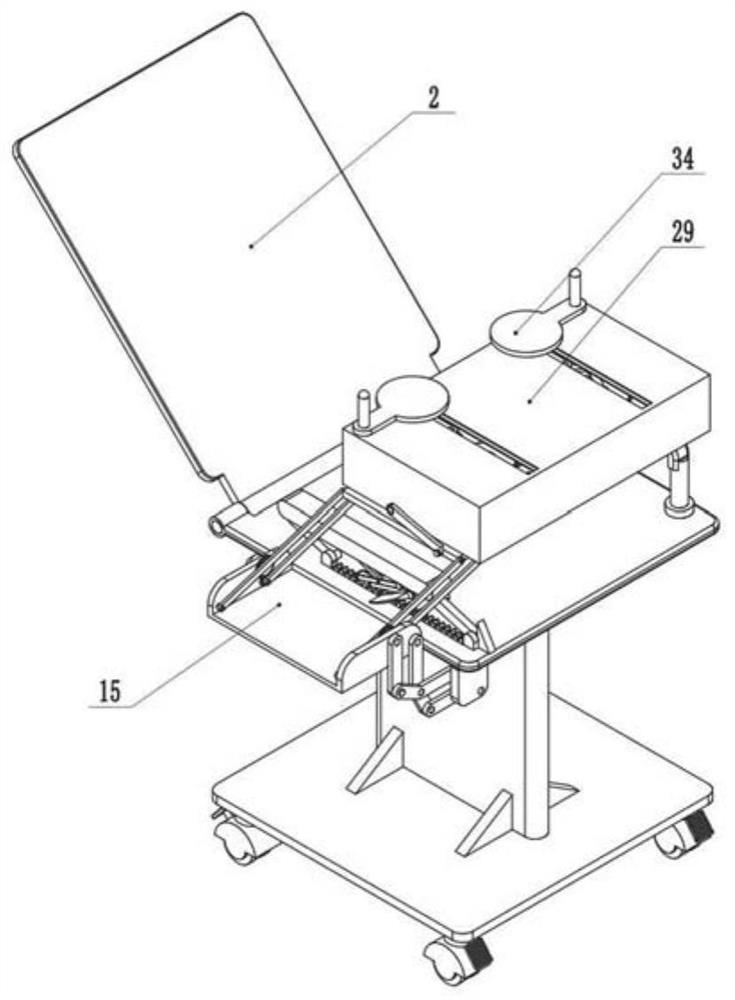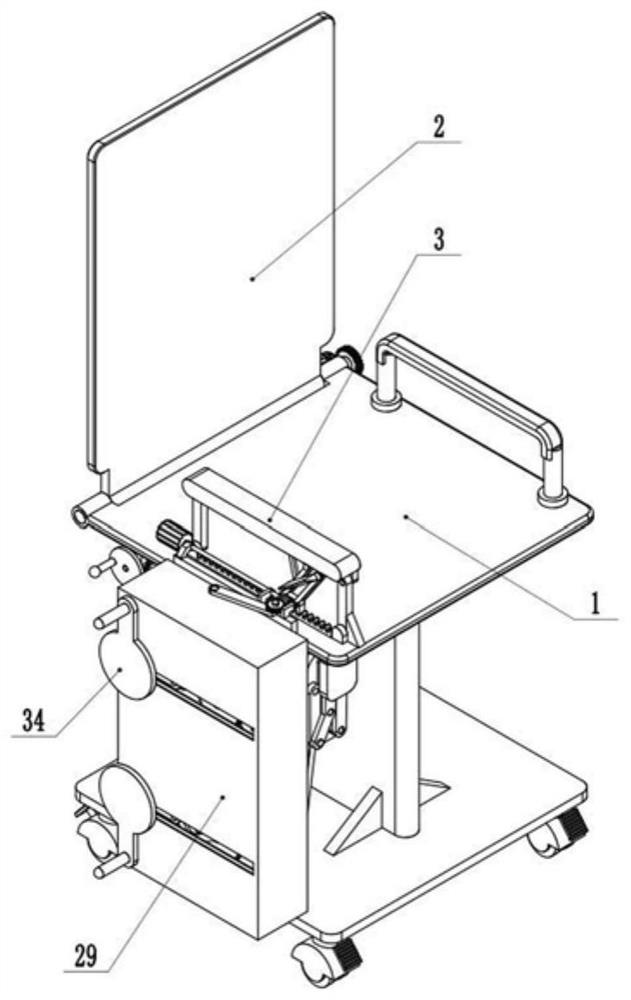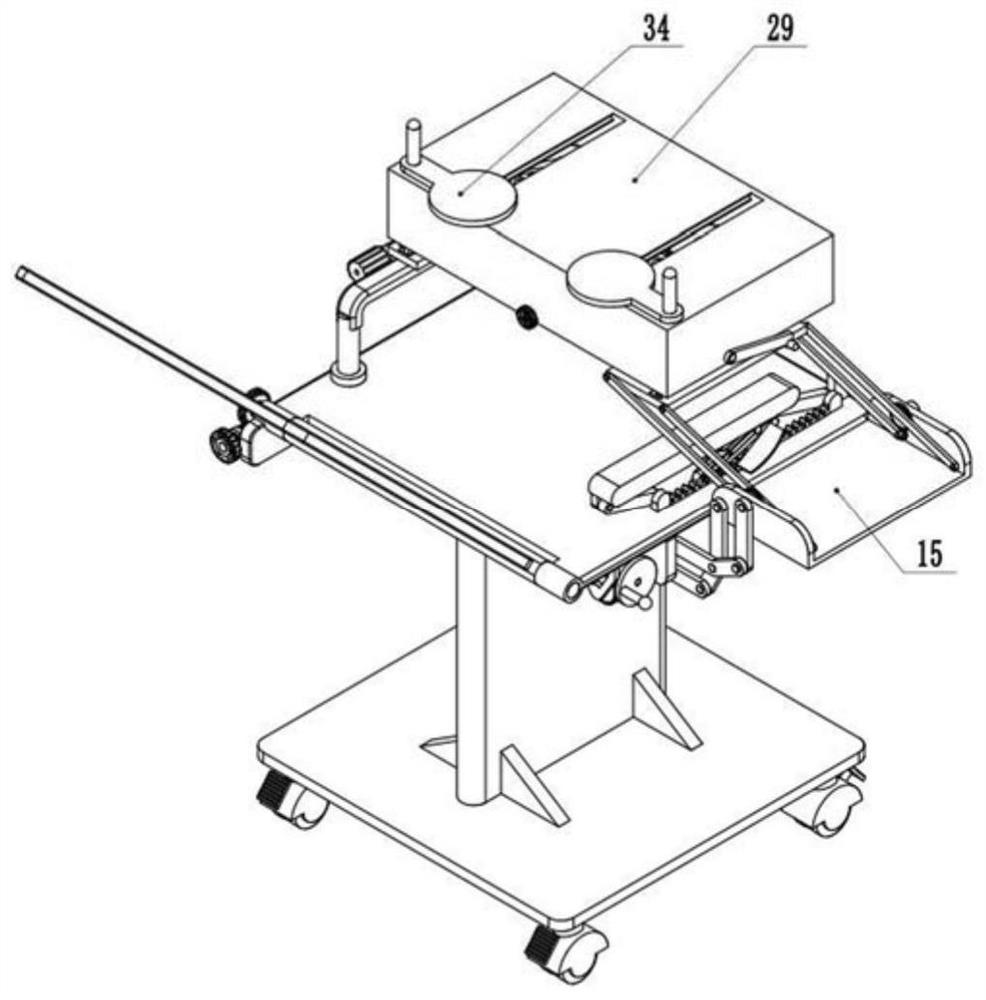Postoperative rehabilitation exercise device for breast surgery
An exercise device and breast surgery technology, applied in sports accessories, training equipment for adjusting the cardiovascular system, training equipment for adjusting coordination, etc., can solve the problem that the patient's upper limb rehabilitation exercise cannot achieve the expected effect and affect the patient's quality of life. Patients can not persist for a long time and other problems, to achieve the effect of novel structure, convenient exercise, simple and convenient operation
- Summary
- Abstract
- Description
- Claims
- Application Information
AI Technical Summary
Problems solved by technology
Method used
Image
Examples
Embodiment Construction
[0043] The following are specific embodiments of the present invention, and further describe the technical solution of the present invention in conjunction with the accompanying drawings, but the present invention is not limited to these embodiments.
[0044] Such as Figure 1-20 As shown, the present invention provides a postoperative rehabilitation exercise device for breast surgery, including a seat 1, a backrest 2 that can be turned back and forth is installed at the rear end of the seat 1, and a movable backrest 2 is installed on the left side of the upper end of the seat 1. The height adjustment armrest 3, the left side of the seat 1 is equipped with a mounting plate 27 that can be turned over to the upper end of the seat 1, and the upper surface of the mounting plate 27 is equipped with an exerciser that can slide and tilt forward. Box 29, the left and right sides of the upper surface of the exercise box 29 are respectively slidably connected with exercise discs 34 that...
PUM
 Login to View More
Login to View More Abstract
Description
Claims
Application Information
 Login to View More
Login to View More - R&D
- Intellectual Property
- Life Sciences
- Materials
- Tech Scout
- Unparalleled Data Quality
- Higher Quality Content
- 60% Fewer Hallucinations
Browse by: Latest US Patents, China's latest patents, Technical Efficacy Thesaurus, Application Domain, Technology Topic, Popular Technical Reports.
© 2025 PatSnap. All rights reserved.Legal|Privacy policy|Modern Slavery Act Transparency Statement|Sitemap|About US| Contact US: help@patsnap.com



